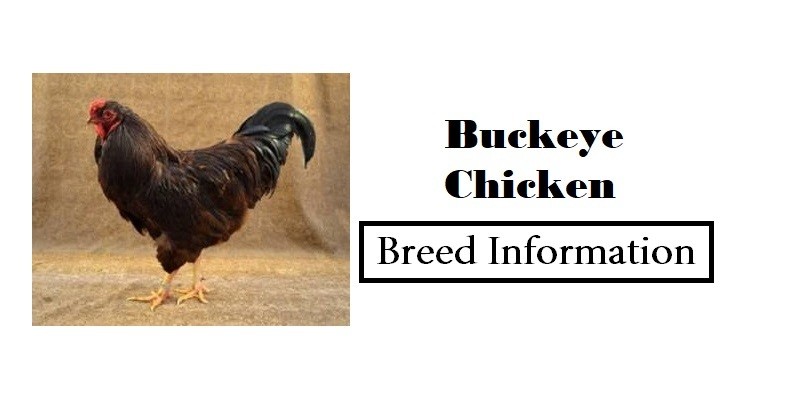Buckeye Chicken is a breed of chicken named after State of Ohio’s nickname “Buckeye State”. A certain Mrs. Nettie Metcalf from Warren, Ohio developed this chicken breed in the late 19th century.
This chicken breed was developed when the Plymouth Rocks breed was crossed with the Buff Cochin breed and the first breed to be developed by a woman. It is the only an American chicken breed that has a pea comb.
Its first name was Pea Combed Rhode Island Reds, but it proved to limit its popularity. So Mrs. Metcalf changed its name to Buckeye chicken to honor her state, which became popular until today. Sad to say, Buckeye chicken is now endangered, and its conservation is threatened.
Buckeye chicken eggs are largely brown, and they lay around 200 eggs per annum. Their skin and legs are yellow and hardy on cold weather. This is because of their pea comb. This chicken breed does well in any living condition, but they prefer most a free-range environment.
Buckeye Chicken | Breed Profile

| Country of origin: | United States |
| Primary use: | Dual-purpose meat/eggs |
| Weight: Male: | 9 lb (4.1 kg), Female: 6.5 lb (2.9 kg) |
| Temperament: | Forager |
| Recognized Varieties: | Mahogany red |
| Egg production (annual): | 200 |
| Egg color: | Brown |
| Egg size: | Medium |
| Comb type: | Pea |
Characteristics Of The Buckeye Chicken
Buckeye chicken breed is dual purpose – laying medium to large brown eggs and giving meat. Their plumage is deep lustrous red. They are considered large fowl breed and have yellow legs and skin. Their tail feathering ranges from dark to black.
Buckeye Chickens may be confused with Rhode Island Red chickens due to their history. However, Buckeye chickens have a unique body shape and color. They are more slanted and short, but their backs are broad.
They have muscular and meaty thighs, breast, and powerful wings. Buckeye’s color is darker than the original Rhode Island Red. The fluff on its back has a slate-colored bar. It has tight feathering as the Rhode Island Red which is considered unique in the American poultry history.
Buckeye rooster /cock weigh approximately 9 pounds while hens weight around 6.5 pounds. Bantam cocks weigh 34 oz, and Bantam hens weigh 34 oz. Hens lay medium to large brown eggs at around 200 eggs per year.
Behavior/ Temperament/ Use
Buckeye chicken breed is gentle, friendly, and active. They are adaptive to different living conditions but most adaptive to cold-weather. They prefer wide and free-ranged living environment. They are also meat and egg dependable with their capability to lay around 200 eggs per year. Foragers as they are, they love to chase mice as their food.
They are also foragers and are vigilant in chasing mice that some breeders compare them to a cat, ability-wise. They are friendly and not afraid of human interactions. During the breeding season, some males show aggressiveness.
They do not feather-pick each other, which are subject to further study why it is so. Male Buckeyes emit a dinosaur-like roar which is not typical of any chicken breed. Hens go broody most of the time.
What We Liked/Pros
- Great meat source.
- Weighs 6.5 to 9 pounds.
- Capability to provide 200 medium to large brown eggs per annum.
- Foragers. Can feed them.
- With active yet gentle and friendly temperament disposition.
- Adaptive to any season especially cold-weather.
- No tendency to feather-pick or do harm to other flocks around.
What We Don’t Like/Cons
- Not easily contained. They are active and flighty.
- Needs to add space if you are used to having small poultry animals.
- Expectedly during the breeding season, males tend to be aggressive.
- Hens often go broody.
- Not as common as Rhode Island Red. Considered an endangered breed.
- There are limited Buckeye chickens for sale these days.
- It has no other variety.
Is Buckeye Chicken Good for you?
Yes, if you have ample space in your backyard or farmstead. They are a great source of meat and eggs. They are domestic animals and will never pose a problem. Lastly, you can help save this chicken breed for generations to come!
DON’T MISS
Last Updated on January 14, 2025 by Pauline G. Carter

